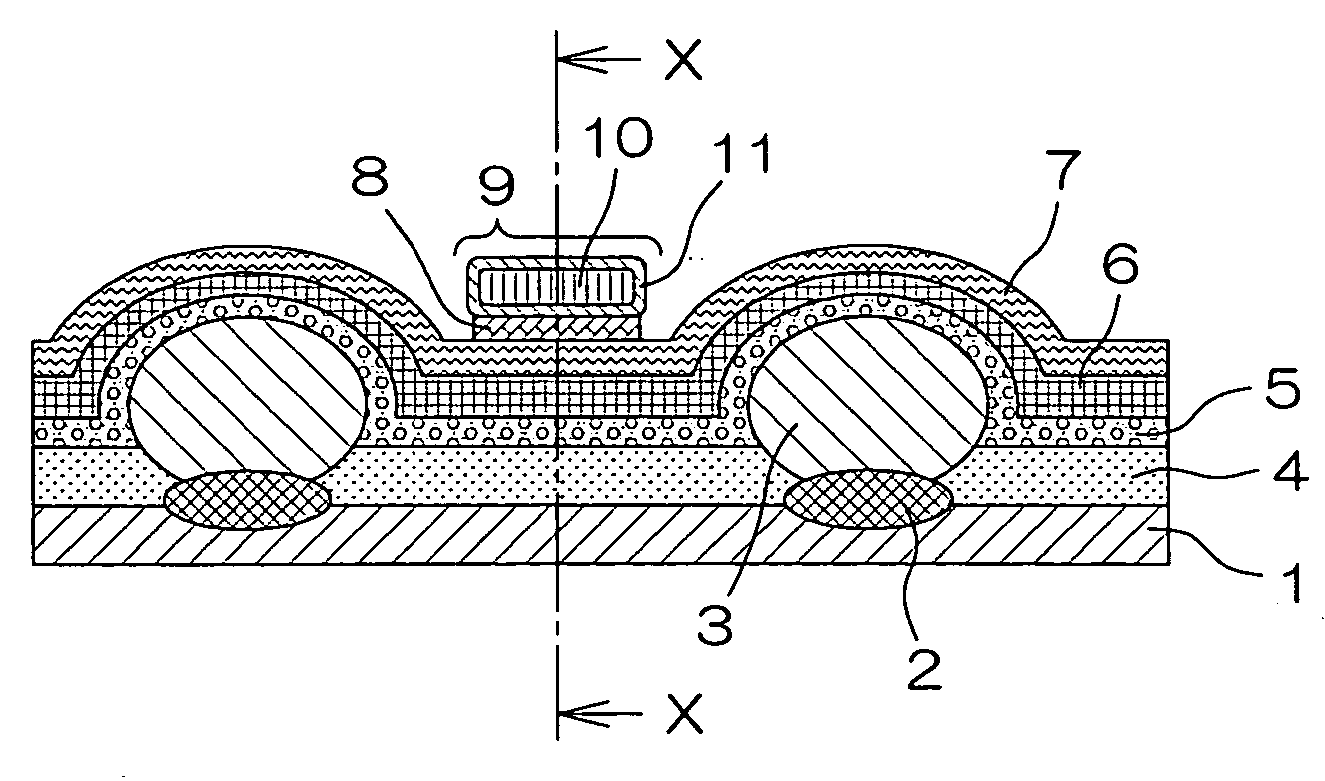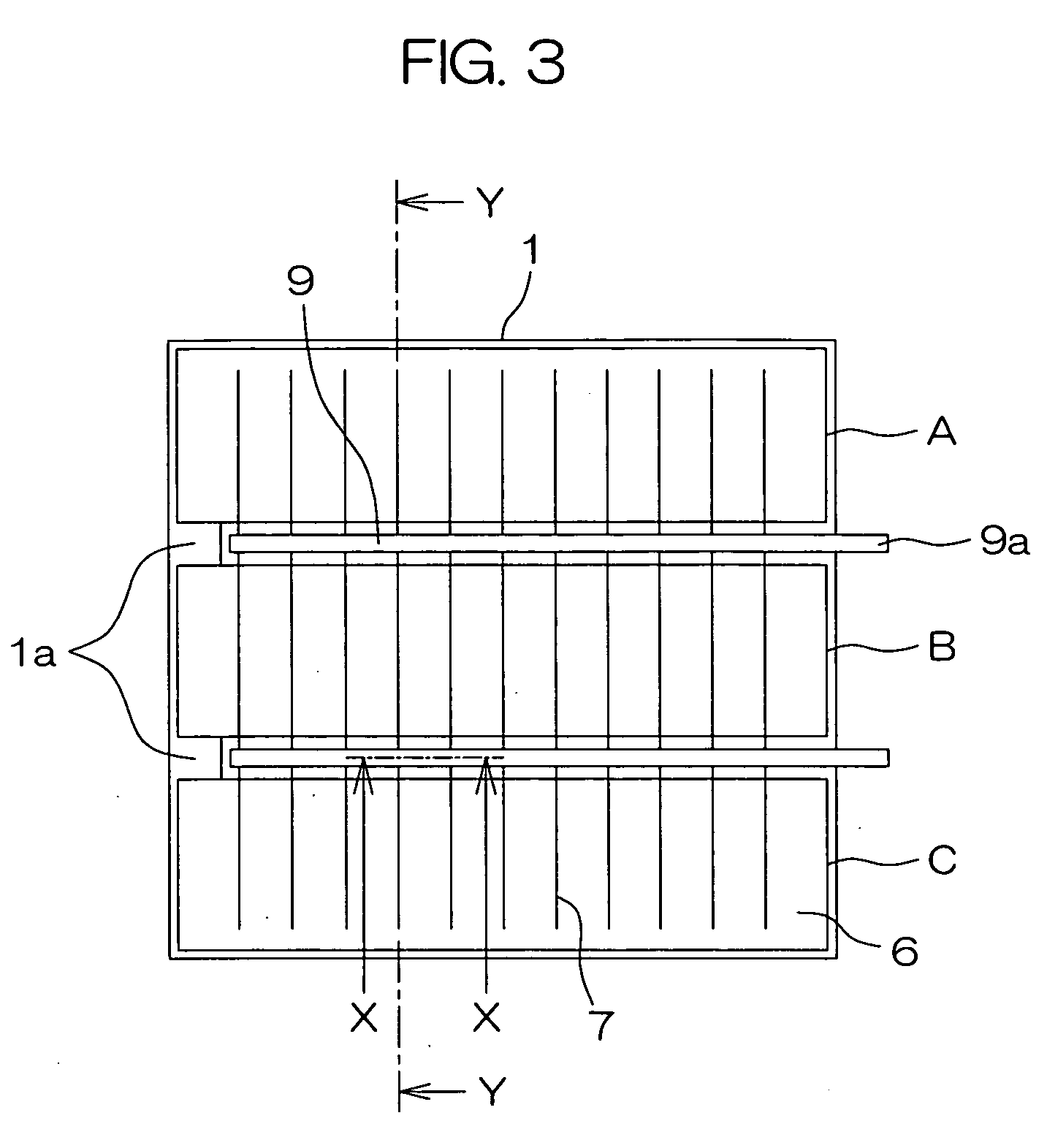Photo-electric conversion cell and array, and photo-electric generation system
a photoelectric generation system and photoelectric conversion technology, applied in the direction of photovoltaics, electrical devices, semiconductor devices, etc., can solve the problems of increasing the material cost of the connection electrode, reducing the connection strength, and difficult to handle the connection electrode, so as to improve the economic merit, improve and collect efficiently without reducing the efficiency of photovoltaic generation
- Summary
- Abstract
- Description
- Claims
- Application Information
AI Technical Summary
Benefits of technology
Problems solved by technology
Method used
Image
Examples
example 1-1
[0106] A substrate 1 was formed by forming aluminum alloy portions on the both surfaces of an aluminum alloy substrate or SUS 430 through cold rolling via a Ni foil. On the substrate 1 were randomly provided p-type silicon particles 3 while securing intervals from the bus bar attaching positions. Silicon particles 3 were bonded to the aluminum alloy by heating in atmosphere at or above 577° C., which is the eutectic temperature of aluminum and silicon. On top of this, an insulator, chiefly made of polyimide resin, was applied to continuously cover the side surface portion of the substrate 1 while end portions 1a were masked, followed by heating in atmosphere. The insulation layer 4 was thus formed. Subsequently, the top surfaces of the p-type silicon particles 3 were rinsed with a diluted aqueous solution of hydrofluoric acid (HF:pure water=1:100) for cleaning. A semiconductor layer 5, mixed crystals of n-type crystalline silicon and amorphous silicon, was formed above the silicon p...
example 1-2
[0110] The group of serially-connected cells of Example 1-1 was made into a module by the lamination processing in a vacuum laminating apparatus in the structure: glass substrate / EVA / cell / EVA / PET lamination sheet (back sheet), followed by crosslinking for 30 min. in an oven heated to 150° C. The crosslinking was performed to polymerize molecules of EVA. This module is referred to as Example 1-2. The output terminal was pulled to the back surface before the lamination processing, and pulled out through a take-off made in EVA and the back sheet.
example 1-3
[0111] The cell connection electrodes were formed from an electric-conducting adhesive agent. The electric-conducting adhesive agent, which was based on resin containing silver or other kinds of electric conducting powder, was adhered by heating and pressing at about 200° C. The rest of the fabrication was the same as that in Example 1-2.
PUM
 Login to View More
Login to View More Abstract
Description
Claims
Application Information
 Login to View More
Login to View More - R&D
- Intellectual Property
- Life Sciences
- Materials
- Tech Scout
- Unparalleled Data Quality
- Higher Quality Content
- 60% Fewer Hallucinations
Browse by: Latest US Patents, China's latest patents, Technical Efficacy Thesaurus, Application Domain, Technology Topic, Popular Technical Reports.
© 2025 PatSnap. All rights reserved.Legal|Privacy policy|Modern Slavery Act Transparency Statement|Sitemap|About US| Contact US: help@patsnap.com



